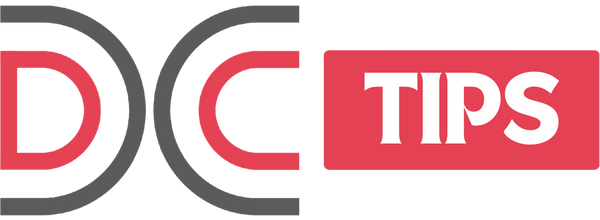Job vacancies at Walmart are available and present a golden opportunity for job seekers. Walmart, a multinational retail corporation, stands out in the global labor market.
This article aims to guide you through the job application process at Walmart, making it as simple as possible. Walmart’s extensive job vacancies could be your next destination.
Various Opportunities at Walmart
Walmart offers a wide range of job roles, ensuring a place for everyone, regardless of their professional aspirations or level of experience. Let’s take a look at the variety of positions available:
- Store Associates: These individuals are the backbone of Walmart’s operations. They interact with customers, restock shelves, and ensure a pleasant shopping experience.
- Department Managers: These managers oversee specific sections within the store, such as groceries or electronics, maintaining inventory and leading their teams effectively.
- Assistant Store Managers: They play a crucial role in store operations, assisting the store manager in various management tasks, from staff training to customer service.
- Store Managers: These are the people responsible for overseeing the entire store operation, ensuring smooth functioning and boosting sales.
- Distribution and Warehouse Associates: These workers manage inventory, handle shipping and receiving of products, and ensure an efficient supply chain.
- Corporate Roles: From marketing and finance to IT and human resources, these positions form the strategic core of Walmart, allowing the company’s vision to become a reality.
Now that you are familiar with the various roles, you can identify which position best fits your professional aspirations and skills. With a wide range of options, the possibilities are limitless.
Essential Skills and Qualifications for Roles
To fit into the right role, it’s crucial to understand the required skills and qualifications. These vary widely depending on the position, but here’s a summary of what you might need for various roles:
- Store Associates: Strong communication and customer service skills are required. Specific qualifications are not needed, although a high school diploma or equivalent is preferred.
- Department Managers: In addition to excellent communication, leadership skills are needed. A high school diploma and relevant retail sales experience are usually required.
- Assistant Store Managers: These roles require strong leadership and managerial skills. A bachelor’s degree and prior retail sales management experience are typically requested.
- Store Managers: Management, decision-making, and communication skills are essential. Most require a bachelor’s degree and extensive retail sales management experience.
- Distribution and Warehouse Associates: These roles require physical endurance, attention to detail, and basic math skills. Specific educational qualifications are not needed, but relevant experience can be beneficial.
- Corporate Roles: These require specialized skills based on the department, such as marketing, finance, or human resources experience. A bachelor’s or master’s degree in a related field, along with relevant work experience, is typically required.
Understanding the requirements for each role is crucial for selecting the right fit for your professional career. Remember, your skills and qualifications are your passport to securing the ideal position.
Full-Time vs. Part-Time: Understanding the Options
Understanding the difference between full-time and part-time opportunities is crucial for making an informed decision about your career in the company. Both options have unique benefits.
Let’s take a closer look:
- Full-Time Opportunities: These roles usually require a 40-hour workweek. They come with comprehensive benefits, such as health insurance, retirement plans, and paid days off. Full-time may be suitable if you seek stable income and extensive benefits.
- Part-Time Opportunities: Part-time positions offer more flexibility in terms of hours, making them ideal for students, individuals with personal commitments, or those looking for a second job. Although benefits vary, some roles still provide access to health benefits and a 401(k) plan.
Choosing between full-time and part-time depends on your needs, lifestyle, and professional goals. Whether you value the stability of full-time work or the flexibility of part-time, both options offer significant opportunities for growth and experience in the retail sector.
Remember, it’s about finding the right balance for you.
Essential Documents and Information
Applying for a job requires preparation and organization. You’ll need to have all your documents and relevant information ready for a smooth application process.
Here’s a checklist to help you gather what you need:
- Personal Information: Have your contact details, Social Security number, and work history at hand.
- Educational Details: Information about your high school, college, or other relevant academic institutions, including attendance dates and degrees obtained.
- References: A list of professional contacts, preferably with their contact information.
- Work History: A record of your previous employment, including company names, job titles, responsibilities, and employment dates.
- Certificates and Licenses: If applicable, gather any relevant certification or license you possess that may strengthen your application.
Remember, being prepared can make your application process more seamless and quick.
Tailoring Your Resume and Cover Letter
The next step in your job application process involves tailoring your resume and cover letter to the position you’re applying for.
A well-structured resume and a compelling cover letter can significantly increase your chances of landing an interview.
Here are some tips to assist you:
- Highlight Relevant Skills: Ensure that your resume includes all the skills required for the job. For example, if you’re applying for a customer service position, emphasize your communication and problem-solving skills.
- Quantify Achievements: Whenever possible, quantify your achievements in previous jobs. This could be something like “Increased sales by 15% in six months.”
- Use Keywords: Incorporate keywords from the job posting into your resume and cover letter. This can make your application stand out.
- Tailor the Cover Letter: In your cover letter, express why you’re interested in the position and how your skills and experience make you a good fit. Make it specific to the job you’re applying for, rather than a generic letter.
Finding Your Ideal Role: Navigating Job Openings
You can now explore job opportunities on the company’s online portal. Here’s a step-by-step guide to help you navigate the process:
- Visit the Careers Page: The company’s careers page is your starting point. Here you will find all the current job openings.
- Search for Jobs: Use the job search function to find positions that match your interests and qualifications. You can search by keywords, location, or job category.
- Read the Job Descriptions: Each job listing includes a detailed description of the role, responsibilities, and required qualifications. Make sure to read them carefully.
- Make a Shortlist: Once you’ve identified the positions of interest, create a shortlist. This will serve as a guide when you begin to apply.
Finding the right job means understanding and matching your skills and interests with the appropriate position.
Submit Your Application: Create an Account and Complete the Form
With your shortlist ready, you can now start applying. Here’s a simple guide to help you through the process:
- Create an Account: You must create an account on the careers page before applying. This will allow you to track your applications and receive updates.
- Complete the Application: You can now start applying. You will need to complete an online application form for each job. This typically includes sections for personal information, education, and work experience.
- Review Your Application: Before submitting it, take a moment to review your application. Ensure all the information is accurate and complete.
Remember, the application is your chance to make an excellent first impression. So take your time and make it count.
Final Touches: Upload Your Resume and Documents
Uploading your resume and any required documents is the last step in the application process. Here’s how to do it:
- Prepare Your Documents: Before you begin, make sure all your documents are in digital format, usually PDF or Word. This includes your resume and any certificates or licenses you have.
- Upload Your Resume: You’ll see a section on the application form to upload your resume. Ensure that the file is not too large and is in an accepted format.
Upload Additional Documents: If any additional documents are required, you will also find an option to upload them.
Navigating the Interview: What to Expect?
Once your application is shortlisted, the next step is the interview. The company’s interview process may vary depending on the position you’re applying for.
Here’s a general idea of what you can expect:
- Telephone Assessment: Initial interviews are often conducted over the phone to evaluate your interest and basic qualifications for the job.
- In-Person Interview: If you pass the telephone assessment, you will be invited to an in-person interview. This could be an individual or group interview.
- Assessment Test: Some positions may require you to take an assessment test. This could be a personality test, a skills assessment, or a situational judgment test.
- Job Offer: If you impress during the interview and the test, you may be given a job offer. This would include details about your role, compensation, and start date.
Remember, the interview is your chance to showcase your skills and fit for the position. Be confident, be yourself, and don’t forget to express your passion for the job.
Preparing for the Interview: Common Questions and Tips
Being well-prepared for an interview can significantly boost your chances of success. Here are some common interview questions and tips on how to prepare for them:
- Tell me about yourself: This is your opportunity to briefly summarize your career and why you’re interested in the job.
- Why do you want to work here?: Research the company’s values and mission. Align your answer with how they match your professional goals.
- Describe a time when you demonstrated excellent customer service: Prepare examples that highlight your customer service skills. Structure your response using the STAR method (Situation, Task, Action, Result).
- How do you handle difficult customers?: Provide a real example that shows your problem-solving and communication skills.
- What are your strengths and weaknesses?: Be honest and mention what you are doing to improve your weaknesses.
Preparation is key to success. Understand the job requirements, research the company, and practice your answers to common questions. Remember, it’s about demonstrating why you are the right candidate for the job and the company’s culture.
Presenting Your Best Self: Dress Code and Etiquette
How you present yourself during an interview is important. Here are some suggestions on proper dress code and etiquette:
- Dress Code: Dress appropriately for the job you’re applying for. For sales positions, business casual attire is usually acceptable. For corporate roles, a suit may be more appropriate.
- Punctuality: Arrive on time for your interview. It’s better to be early than late.
- Communication: Speak clearly and confidently. Maintain eye contact and listen carefully to the interviewer’s questions.
- Body Language: Sit up straight and avoid fidgeting nervously. Your body language can reveal your confidence and interest in the job.
- Etiquette: Be respectful to everyone you meet, from the receptionist to the hiring manager.
Deciphering the Follow-up Process
The process doesn’t end once you leave the interview room. A follow-up procedure is put into motion. Generally, the hiring team will conduct a background check.
This is a standard practice used to verify your work history, educational qualifications, and, in some cases, criminal records.
If everything verifies correctly, you are likely to receive a job offer. The offer will detail your role, compensation, and start date. At this point, it’s up to you to accept or negotiate the terms.
Remember, the ball is in your court. Ensure that the offer aligns with your expectations and professional goals.
Didn’t Get Selected? Here’s an Action Plan
If you don’t get the job, don’t be disheartened. Here are some proactive steps you can take
- Seek feedback: Don’t hesitate to ask for feedback on your interview performance. This can provide valuable insights for future applications.
- Keep applying: A rejection shouldn’t halt your job search. There are many other opportunities out there, so keep applying.
- Network: Networking can open doors to opportunities that aren’t advertised. Attend industry events, join online forums, and connect with professionals in your field.
Improve your skills: Use this time to enhance your skills. Obtain relevant certifications, take a course, or gain experience through volunteering.
The Conclusion: Landing Your Ideal Role at Walmart
Securing a position with a leading retailer like Walmart is a significant step in your career. This comprehensive guide should provide you with the knowledge and tools to navigate Walmart’s job openings.
By understanding the different roles, preparing effectively, and completing the interview, you are well on your way to joining the Walmart family.
Remember, persistence and preparation are your keys to success. So get ready to take that first step towards a rewarding career with Walmart.












